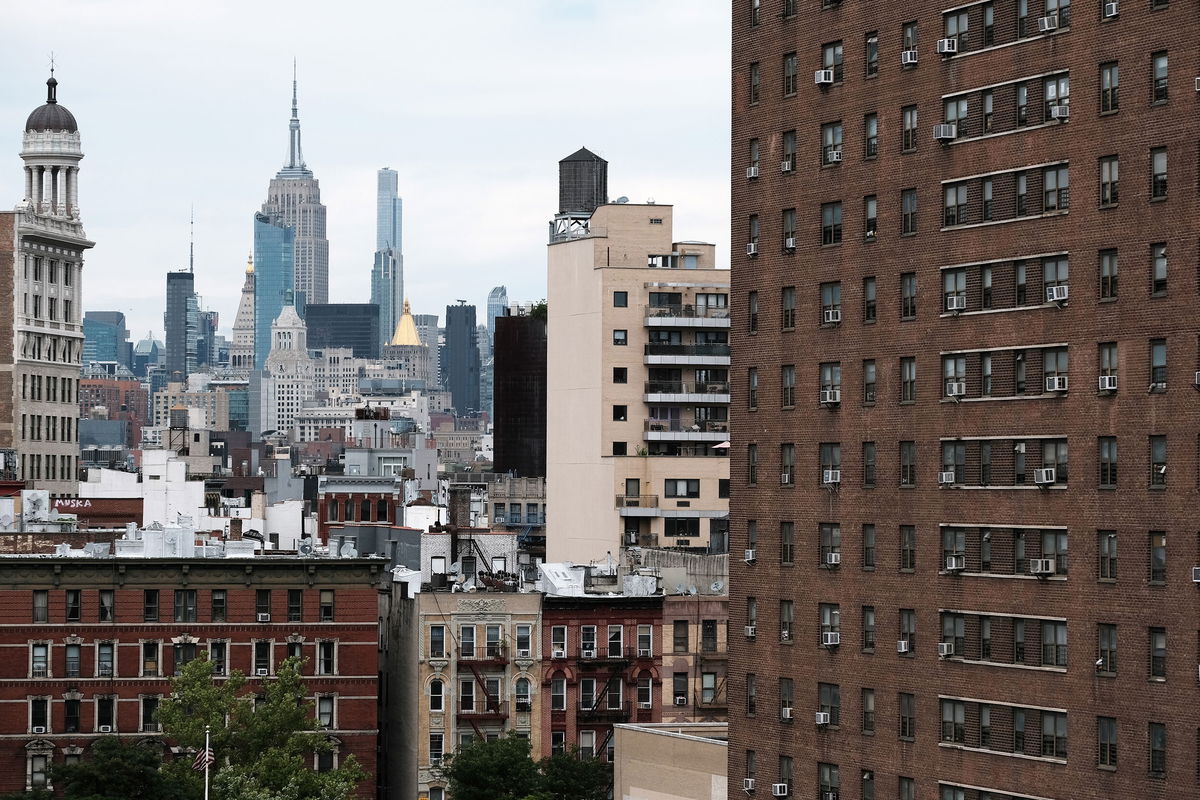US rents hit a record high for the 17th month in a row

US rents hit a record high for the 17th month in a row.
By Anna Bahney, CNN Business
Rents hit a record high in July for the 17th month in a row, putting ever more pressure on renters.
The national median rent hit a new record high of $1,879 a month in July, up 12.3% from a year ago, according to Realtor.com. While rents have been hitting new records for nearly a year and a half, there are some early signs that the market may be starting to cool off: July marked the sixth-straight month of moderating growth, retreating from a 17% year-over-year rent increase in January.
Still, rents rose by double-digit percentages in all size categories in July compared to a year ago, with monthly rents for studios up 14.3% to $1,555; one-bedrooms, up 12.2% to $1,745; and two-bedrooms, up 11.7% to $2,103.
The South and Northeast have seen the largest rent increases. Miami, where rents were up 26.2% from a year ago, saw the biggest increase among the 50 largest US cities for the 10th-straight month. Miami was followed by New York, Boston, Chicago, and Orlando.
Many renters have been scrambling to find a rental they can afford or opting to absorb a rent increase on their current place. But moving into a new apartment has been costlier for renters, according to a survey from Avail included in the Realtor.com report.
Renters have experienced bigger price hikes on new leases — an increase of about $300 a month over their prior rent, on average — compared to renewals, which averaged about a $160 a month jump.
“Whether in a downtown area or suburb, staying put or making a change, renters are stuck between a rock and a hard place when it comes to affordability,” said Danielle Hale, Realtor.com’s chief economist.
Rents rising everywhere, even in ‘affordable’ suburbs
After being hit hard during the pandemic, urban rents are climbing slightly faster than those in suburban areas, with rent growth in cities up 12.8% compared to an 11.7% year-over-year increase in July for suburban areas, according to Realtor.com. That’s a reversal from January 2021, when urban rent fell by 2.5% year-over-year and suburban rent grew by 3.9%.
Still, the rental landscape isn’t back to its pre-pandemic picture. While cities are still pricier, the gap between urban and city rents has narrowed. A renter would have paid a 12.4% premium to live in an urban area in July 2019, but that premium was only 5.8% — or $107 a month — in July 2022.
“Compared to three years ago when rental price premiums were typically concentrated in urban hubs, renting is now nearly as expensive in the suburbs, where the rise in remote work has driven a surge in demand,” said Hale.
She said the days of lower premiums for downtown rentals are numbered, as a return to in-office work and the appeal of city life is sparking a relative uptick in urban rent growth.
“Put simply, renters are feeling it everywhere,” said Hale.
Rent growth expected to cool
But there may be some relief ahead.
“July data shows rent growth is leveling off at a relatively cooler pace than in 2021,” said Hale.
Although 72% of landlords reported plans to raise rents within the next year, the rate held steady in the second quarter over the previous quarter after jumping substantially from January to April, according to the quarterly survey of landlords and renters by Avail.
When asked why they plan on raising rents, landlords cited higher costs for property management expenses, including tax payments, maintenance and upkeep and utilities. In addition, fewer landlords plan to sell properties in July compared to January, now that the sales market has cooled and rents have soared, according to the survey.
“Like renters, landlords are feeling financial pains from the inflationary economy,” said Ryan Coon, Avail co-founder and VP of Rentals at Realtor.com.
The-CNN-Wire
™ & © 2022 Cable News Network, Inc., a Warner Bros. Discovery Company. All rights reserved.